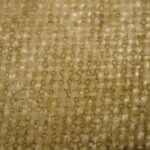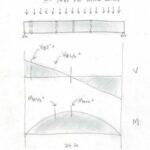Fiberglass seems to be as tough as steel; it’s light weight is perfect for boats, but lightweight RV’s are also made from fiberglass. This saves a bundle on transportation costs. This article deals with RV’s made with fiberglass bodies.
For boats, above and below water repairs are different. Research carefully before beginning the repair process.
Different things can damage fiberglass, mostly from high impact. Hitting a can on the open water or road debris hitting the side of an RV or fiberglass body car creates, delamination (a breaking of the fibers but no hole), tears and of course, gaping holes. A one- inch hole in the bottom of a boat is gaping, if you’re sitting in the boat in the middle of a lake.
You will need:
- Appropriate safety gear for working with fiberglass
- Sander or grinder with a 36 grit disc
- Saw for cutting fiberglass with vacuum attachment
- Dewaxing products
- Fiberglass fabric- 1.5 mat and 6 ounce cloth
- Backer board made form Formica or thin plastic sheet such as Plexiglas
- Vinylester, polyester or fiberglass epoxy
- Putty knife
- Paste wax and masking tape
- PVA mold release
- Heat gun if needed
- Resin catalyst
- Gelcoat pigmented to match your RV
- Resin roller and squeege
Step One:
Determine the extent of the damage. If you have a tear or hole, determine the entire surface needing repair. With the handle end of a screwdriver, begin tapping the surrounding fiberglass. Solid fiberglass produces a sharp sound, while delaminated fiberglass sounds dull. Mark the affected areas.
Never leave delaminated areas as is. They will fail, and you will probably wind up with an even bigger repair.
Step Two:
Cut away the damaged part(s). Make your cut circular or oval. Use a saw with the appropriate blade, wear gloves, goggles and a dust mask rated for fiberglass. Your lungs can’t expel the fibers.
Clean all dust from the area. Use drop cloths and a vacuum attachment on the saw to catch the fibers.
Step Three:
Clean the surface needing repair, and de-wax using a commercial de-waxing solvent. The repair product needs to adhere directly to the fiberglass, not the surface wax. This allows the strongest possible bond for your repair.
Step Four:
When possible, try to repair the damage from the inside. In the case of a double-hull or a hole over a cabinet, removing the cabinet first may not be an option. Of course, if a build- up or hole filler is needed, you may have to remove the cabinet(s) anyway. Be prepared to do so.
Cut the damaged part out, and using the sanding disc, chamfer (or angle) the side of the hole similar to a scarf joint. This allows more space for the repair material to adhere to.
Also, grind an area surrounding the hole to accommodate the fiberglass cloth.
Step Five:
Prepare the surrounding exterior surface for any resin runoff by giving a generous coating of paste wax.
Mask off the surrounding area.
Spray the backer with PVA mold release. Attach to the inside of the hole using heavy- duty tape or screws. The backer can be molded to the area using a heat gun and gentle prodding with tools, not your bare hands. Allow to completely cool before proceeding. The backer acts as a mold for your repair. You may need to reapply the PVA mold release first- I’d mold the backer first, though.
Step Six:
The rule for the number of fiberglass sheets needed is one sheet for every 1/32 of an inch. A one- inch hull needs 32 sheets.
The first sheet should match the size of the hole. The second and subsequent sheets should overlap ½ inch.
Cut the first two sheets from the 1.5 mat, the next should be 6- ounce cloth, then alternate between mat and cloth.
Step Seven:
Decide which resin you will use before you begin. Some harden quickly, others won’t fully cure in the presence of air. These need to be sealed before they will set up.
The first should be used by experienced persons, while the rest of us would probably need the second. Since it won’t set up in air, the working time is extended.
Read and follow all directions and safety precautions for the resin you choose. If it needs a specific catalyst, learn how to mix it before you begin.
Step Eight:
Spray the backer with the Gelcoat. This begins the process. Most fiberglass RV’s are white, although a few home-built models aren’t. Allow to set up.
With the roller, apply a coat of resin, then apply the first two layers of matt and the first layer of cloth against the backer.
Use the roller and squeegee to remove all air bubbles. Allow to set up. Keep in mind that if you’re using the resin that needs a sealer, find out what your waiting time is. Get a snack, take a break.
When ready, lay the next four courses of mat/cloth. Only work with four courses at a time, or the resulting heat from the resin will weaken your work. Continue until the repair is flush with the exterior surface.
Step Nine:
To finish: Cut a piece of mat in a rectangular shape, and a larger piece of cloth. Apply over the patch, smoothing with squeegee. Seal with plastic or PVA to allow the repair to fully cure.
Step ten:
Remove the backer and fill imperfections with gel coat paste and allow to fully cure.
On the outside of the rig, sand, polish and wax the new area to match the surrounding surface.
It’s a lot of work, but doing the repair yourself will save a bundle. And you know it’s done right.
For smaller dings, fiberglass repair kits are available online and at practically every boat and auto parts store.
Source: Don Casey, “Fiberglass Repair,” , Boatus.com website, no date given





